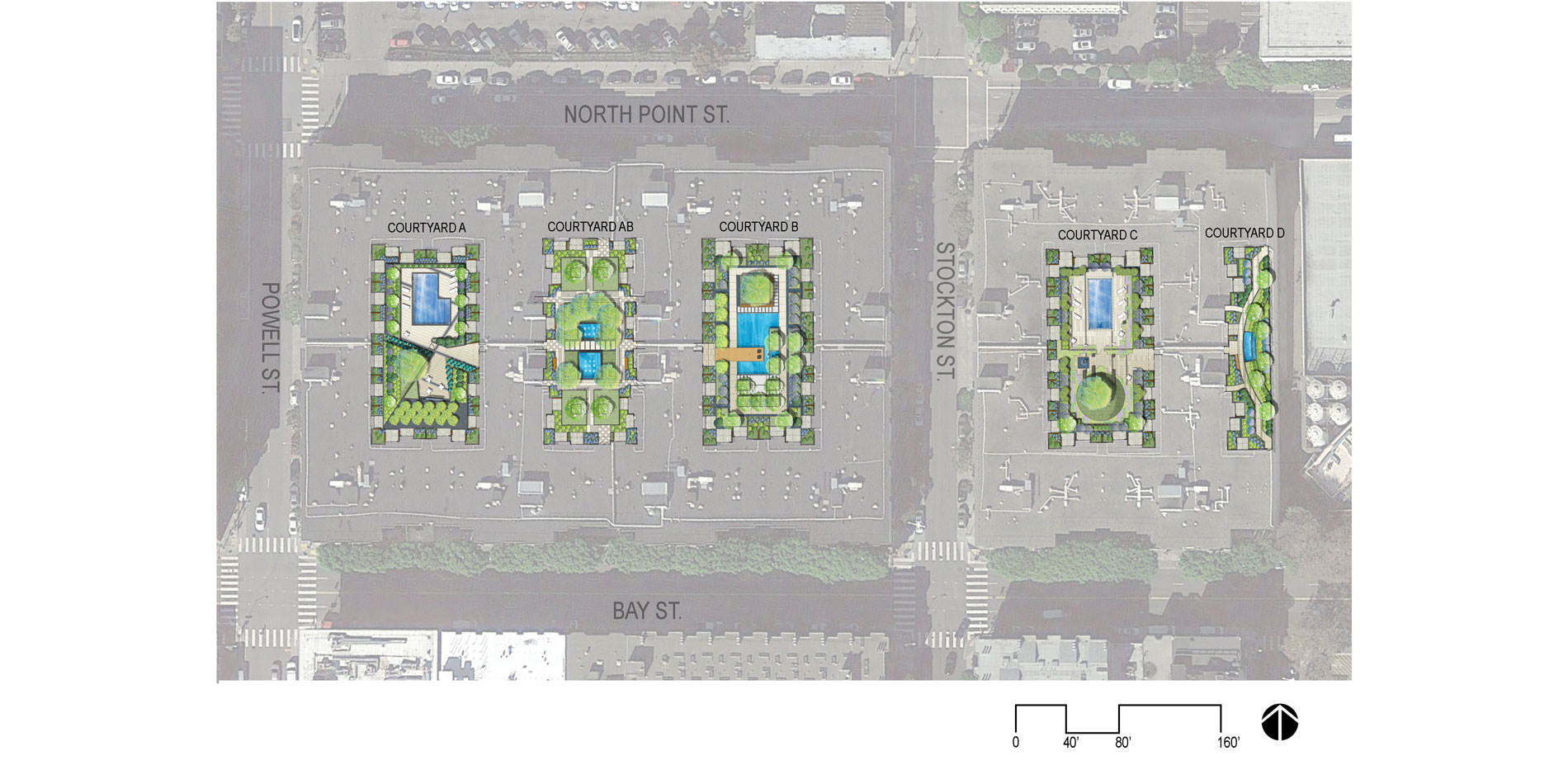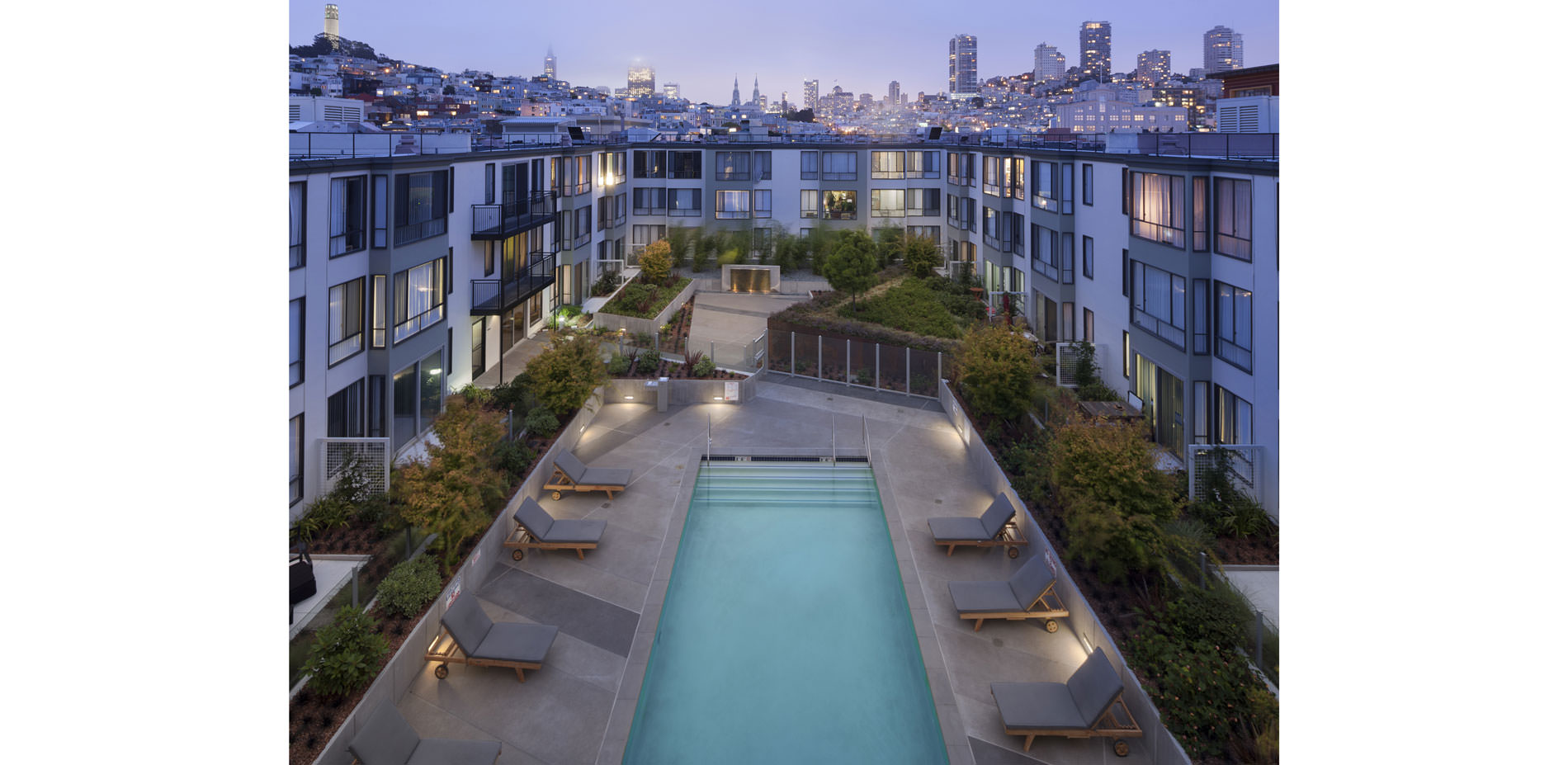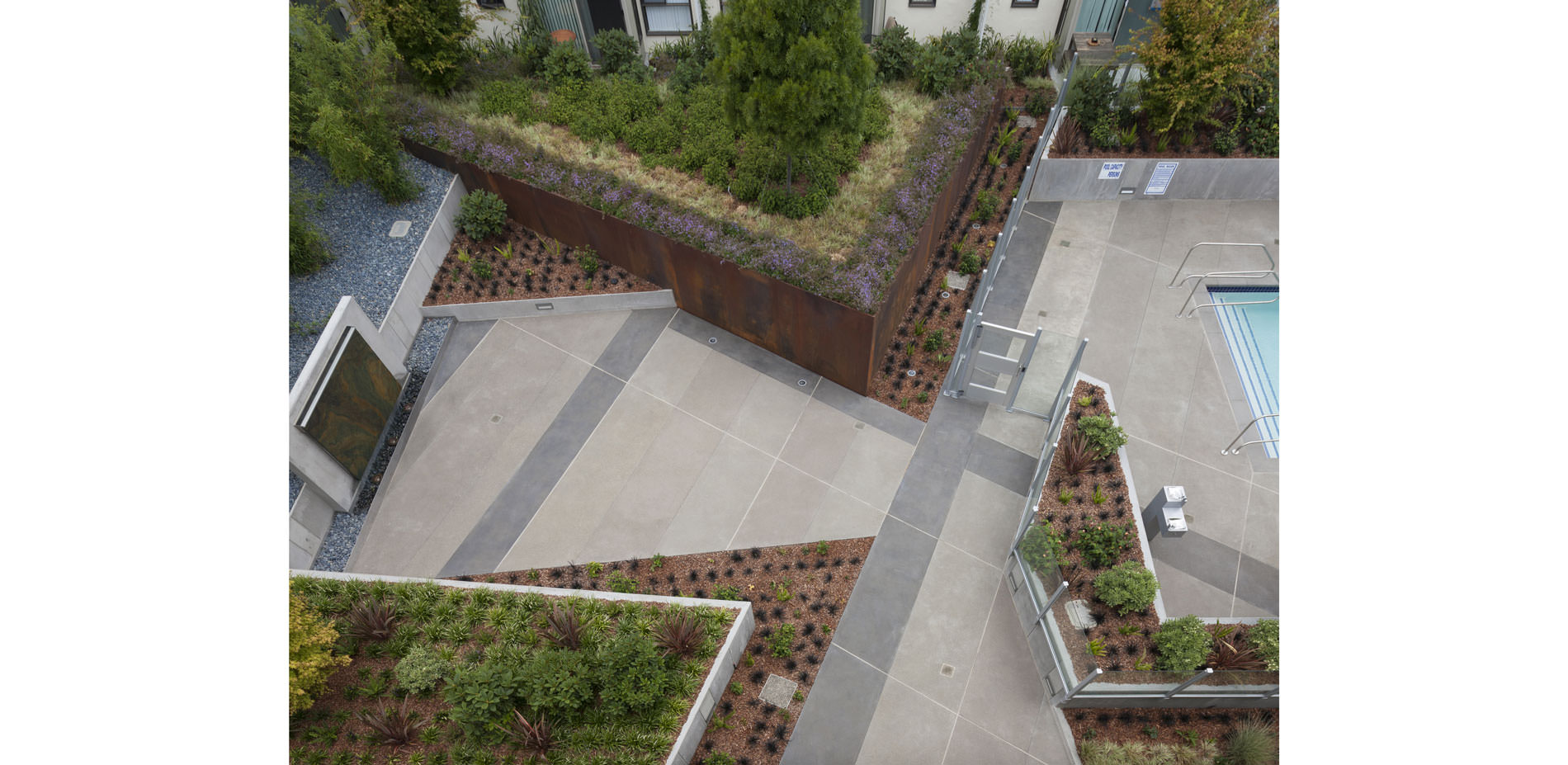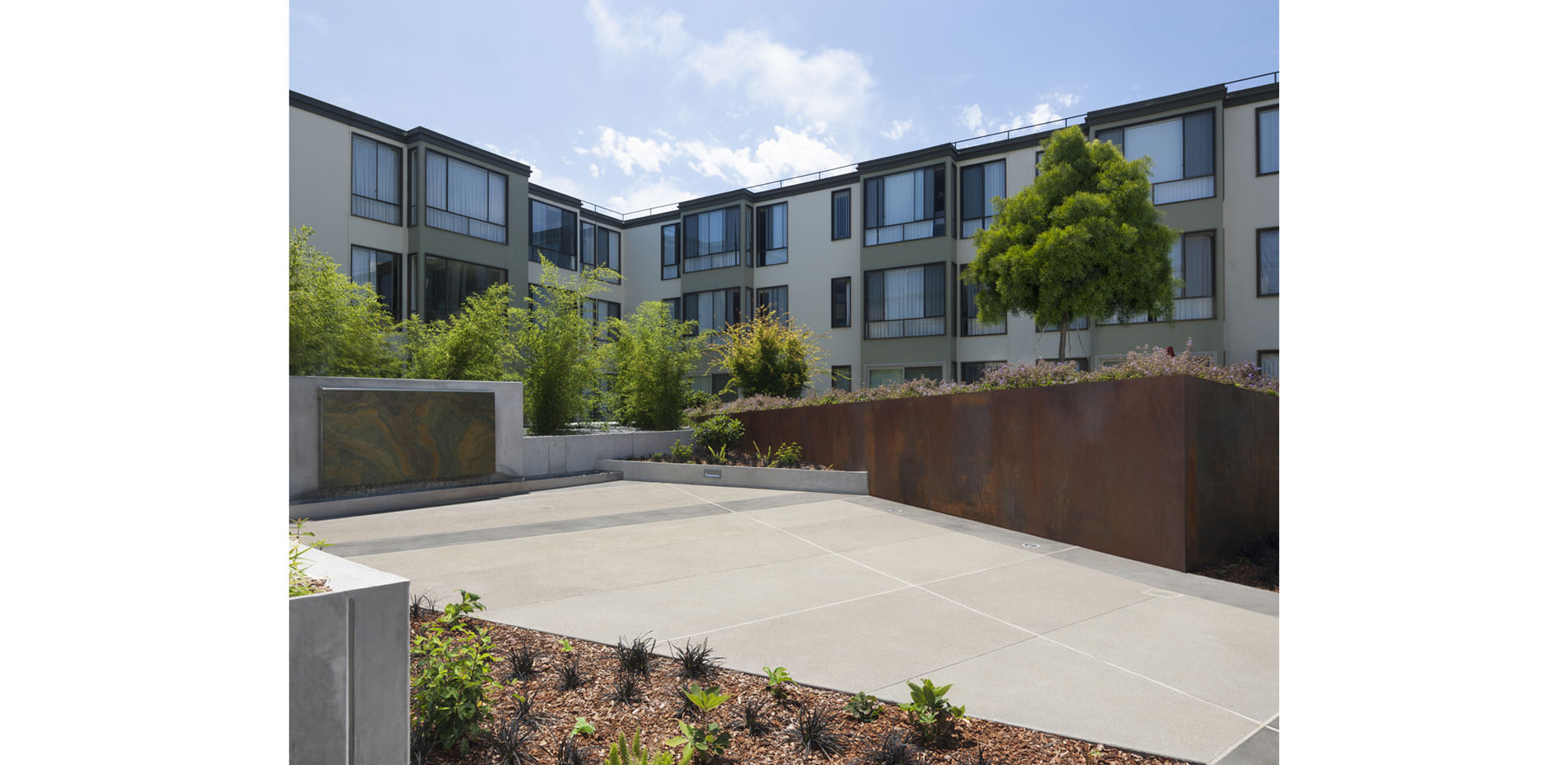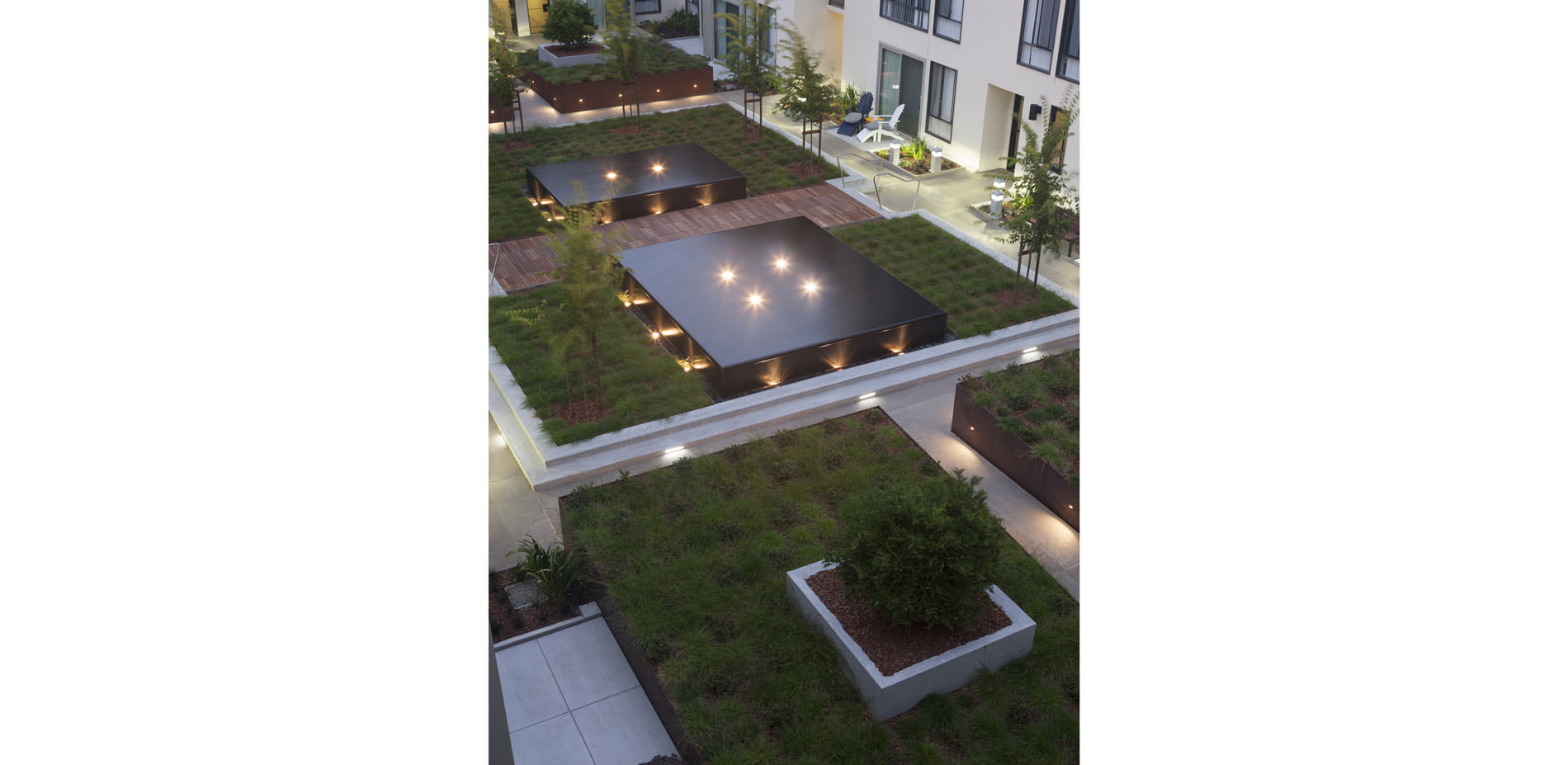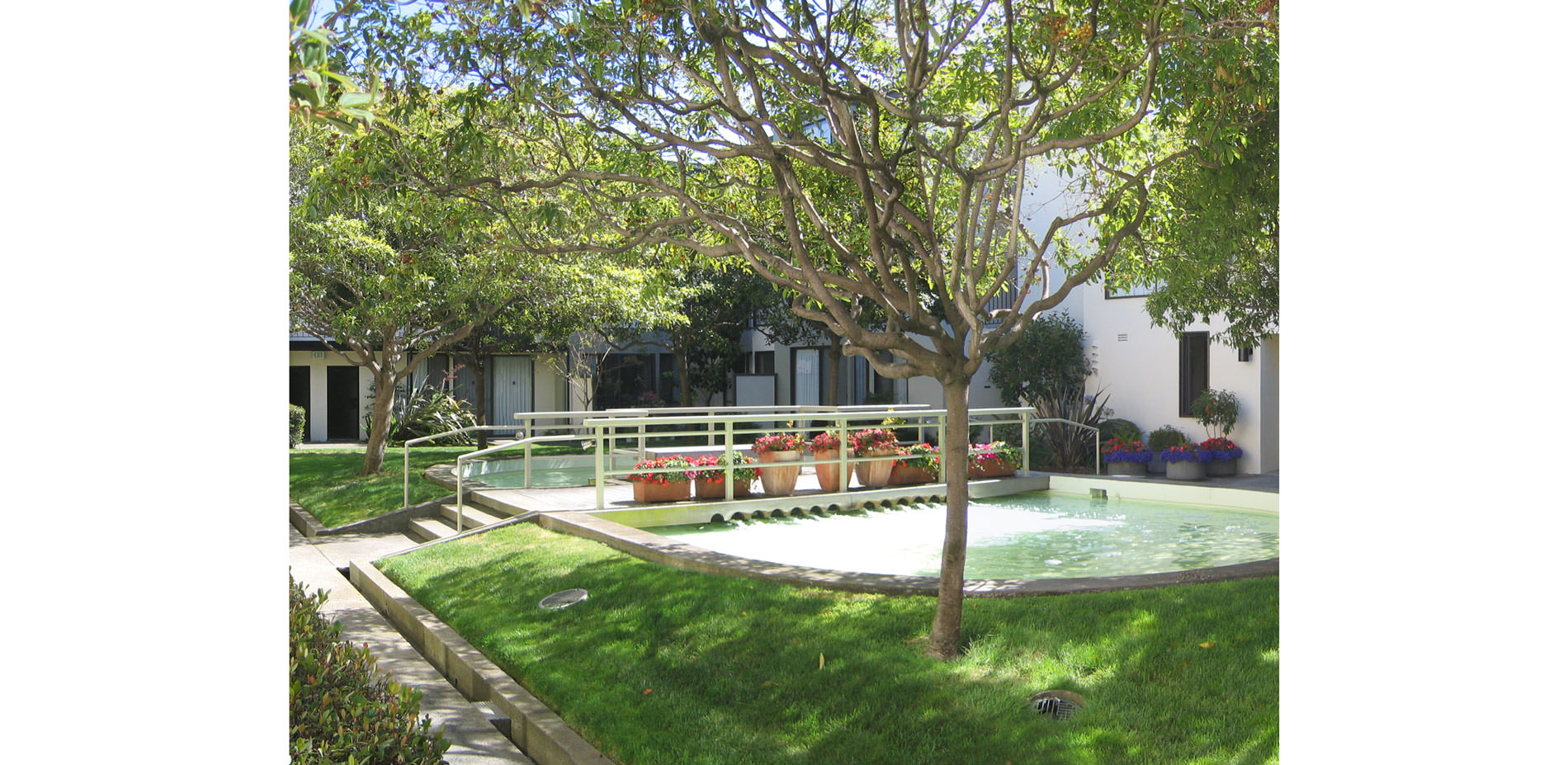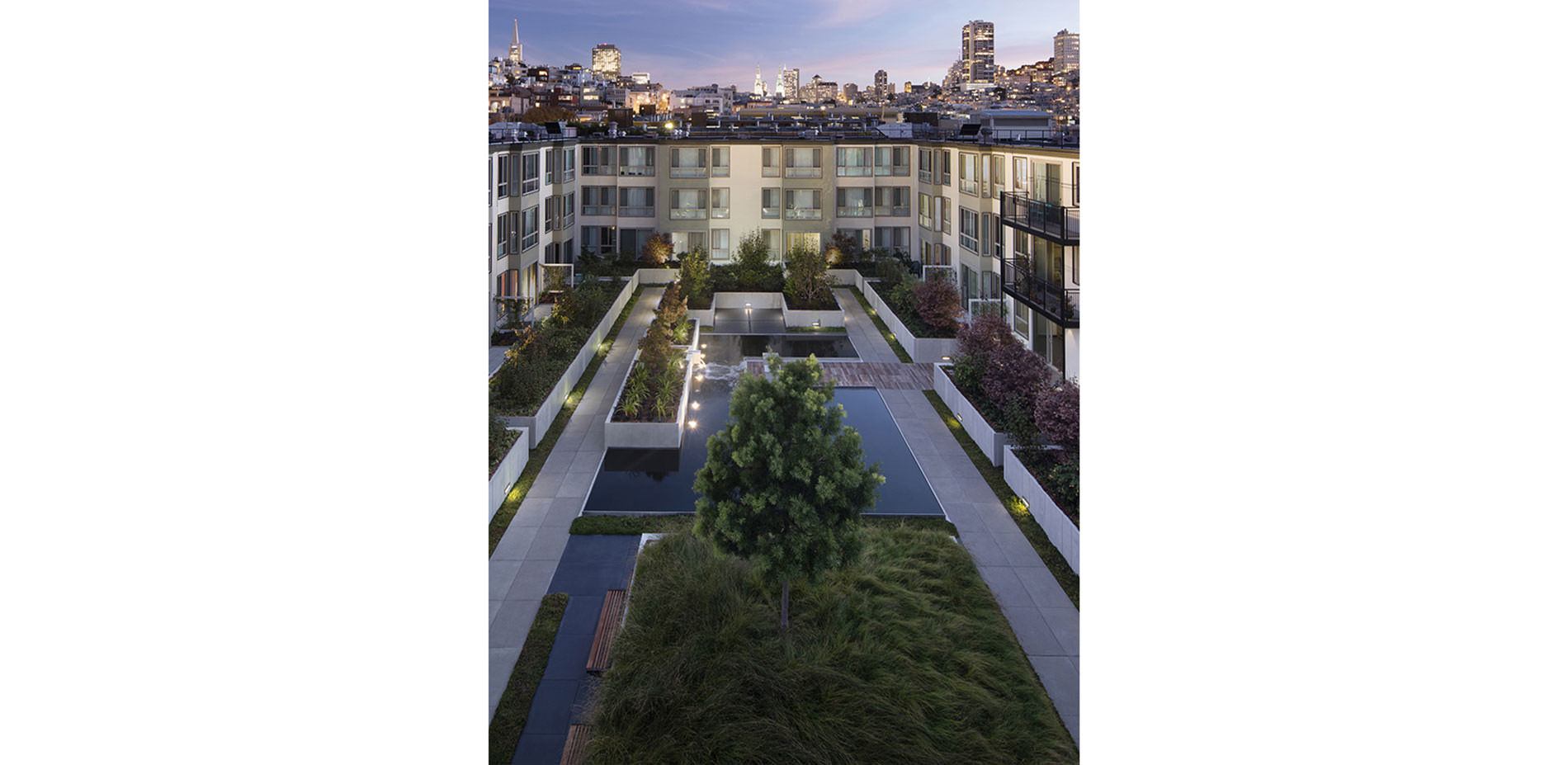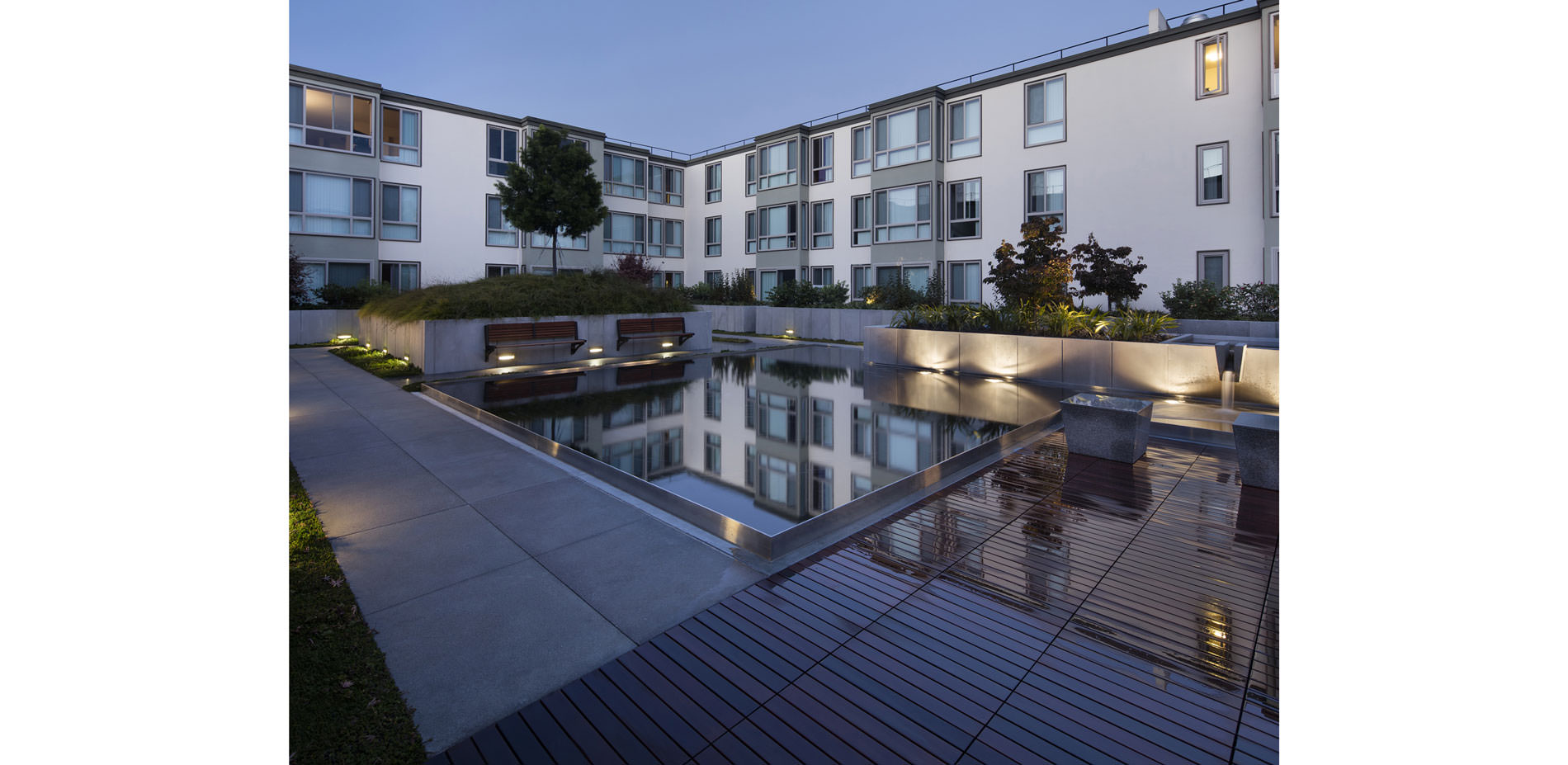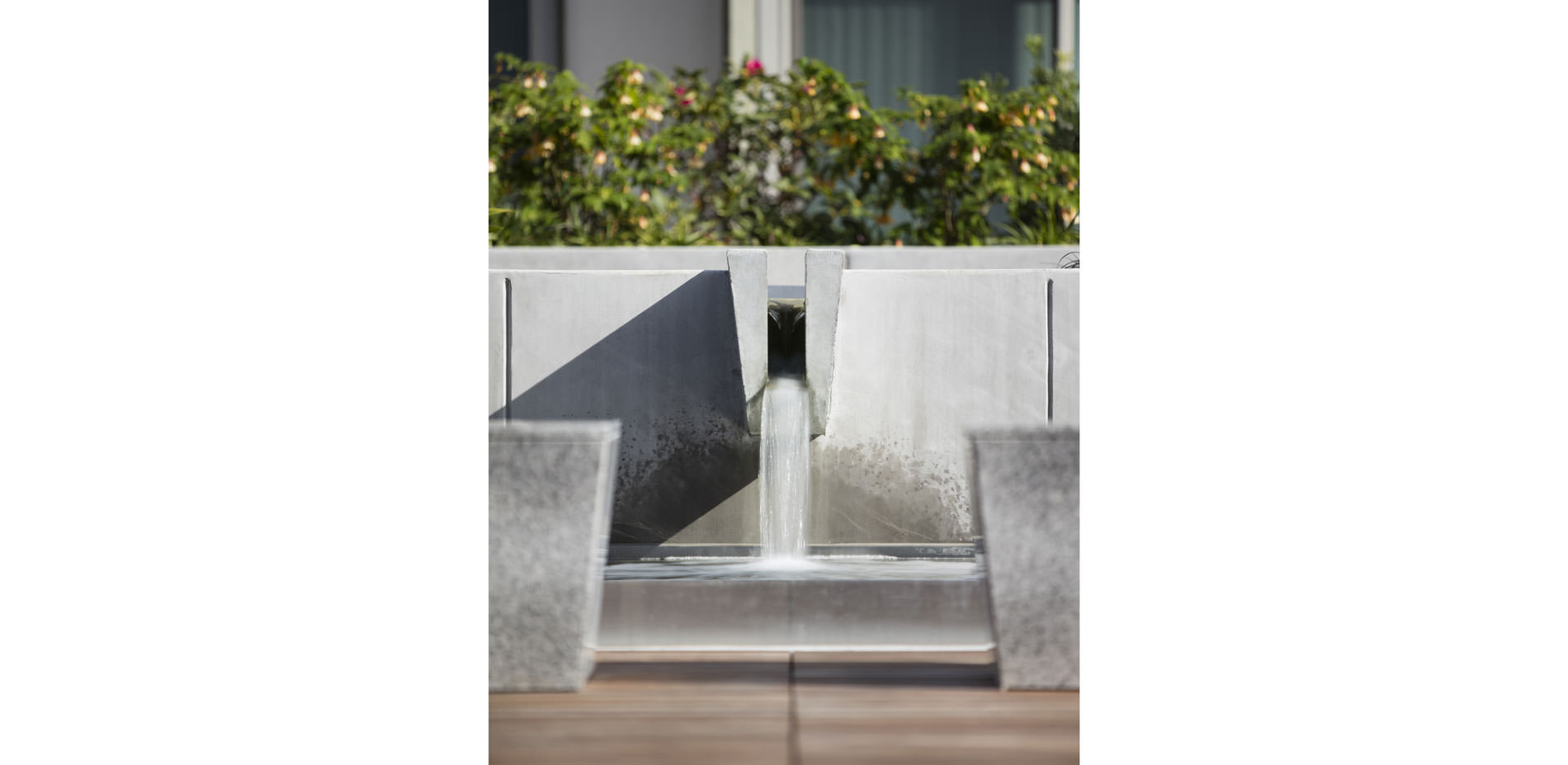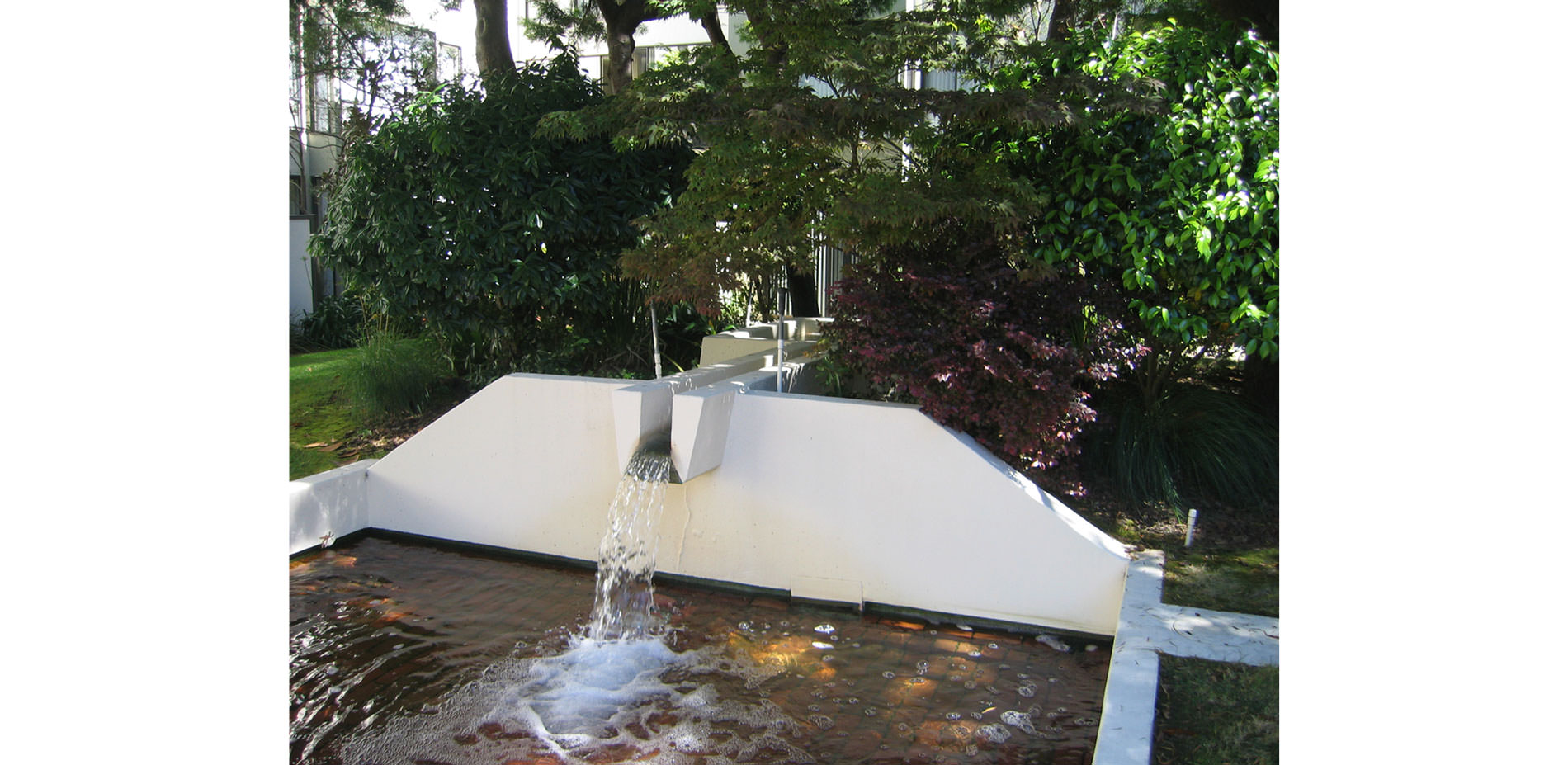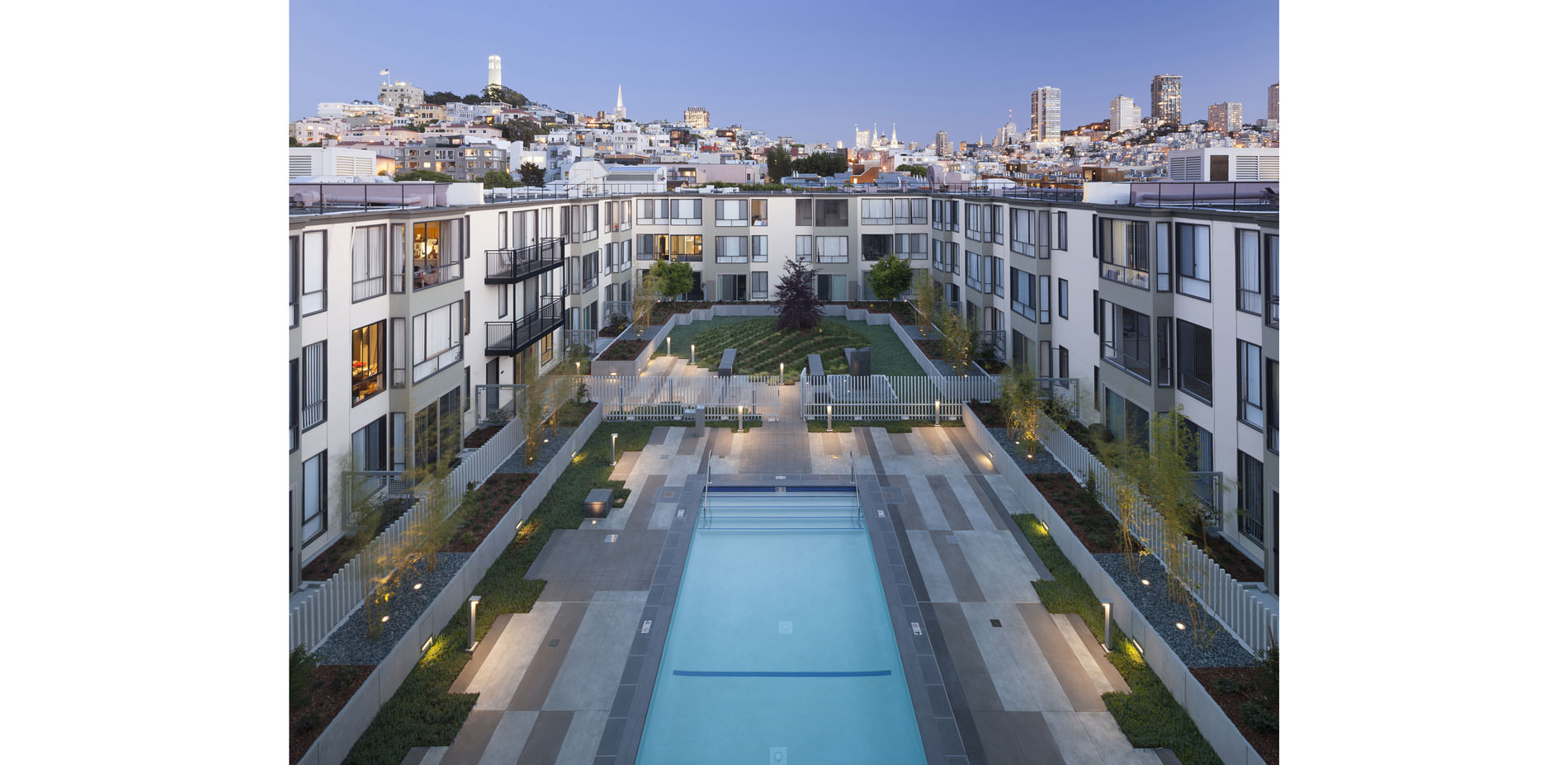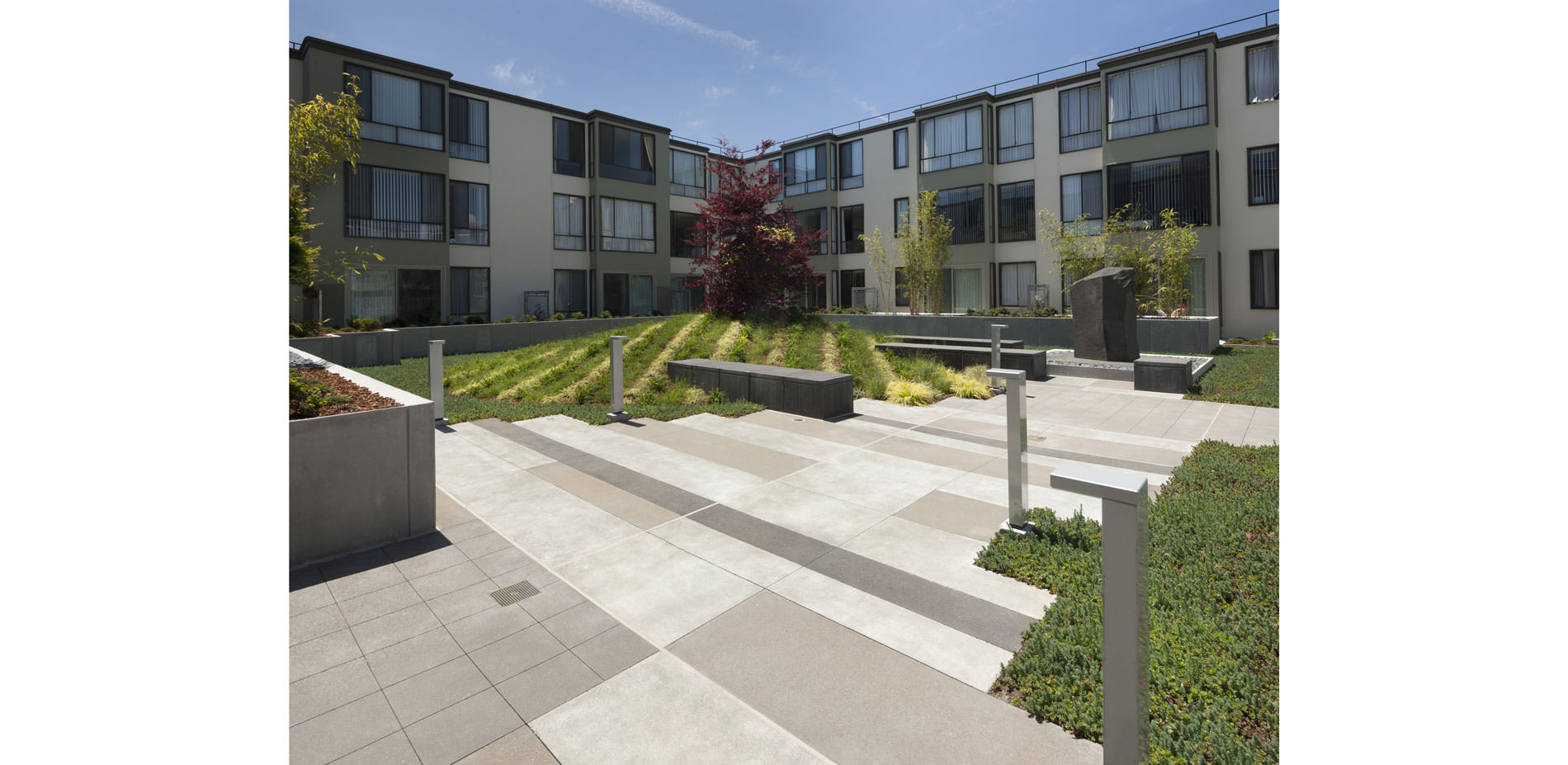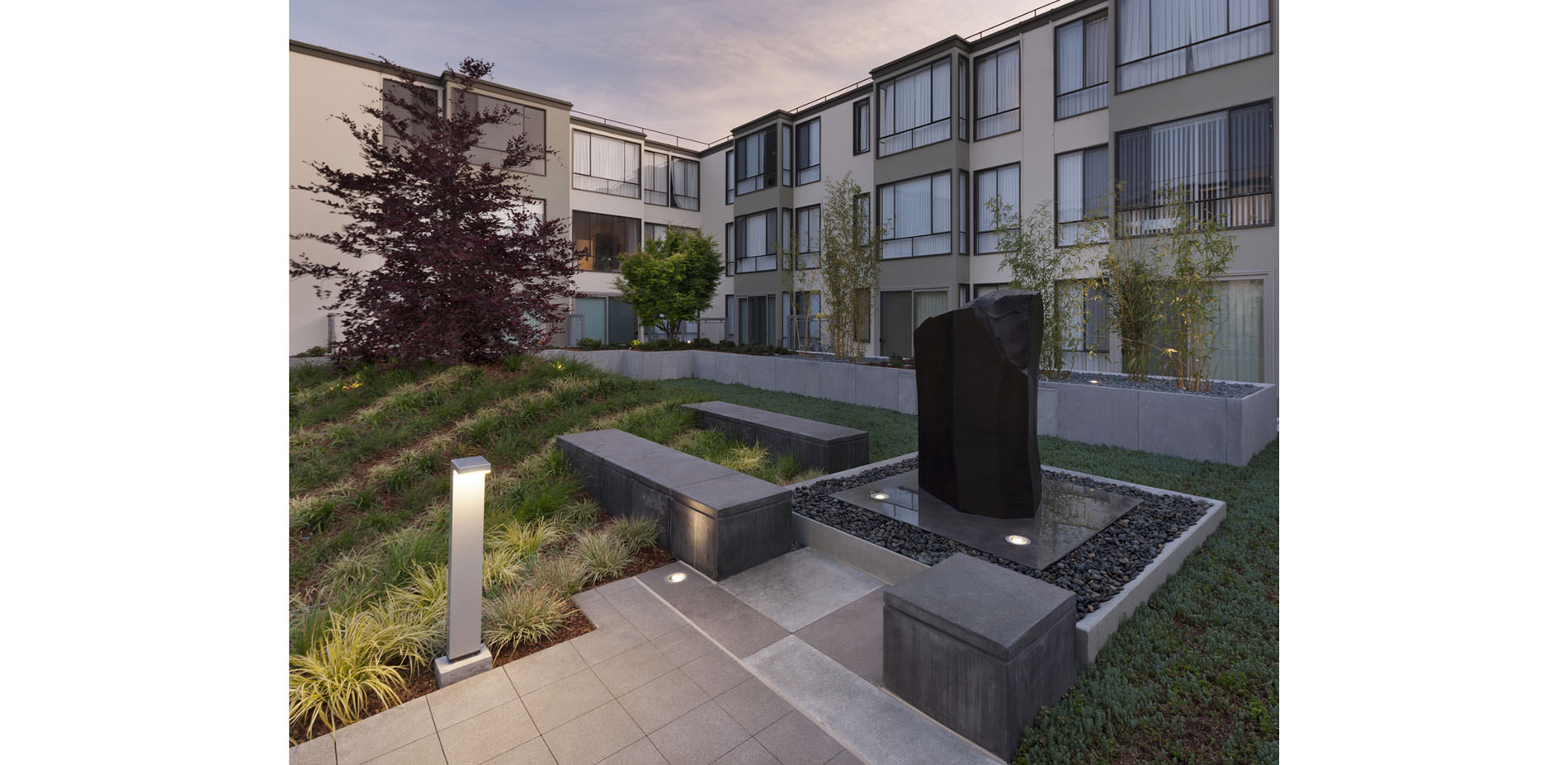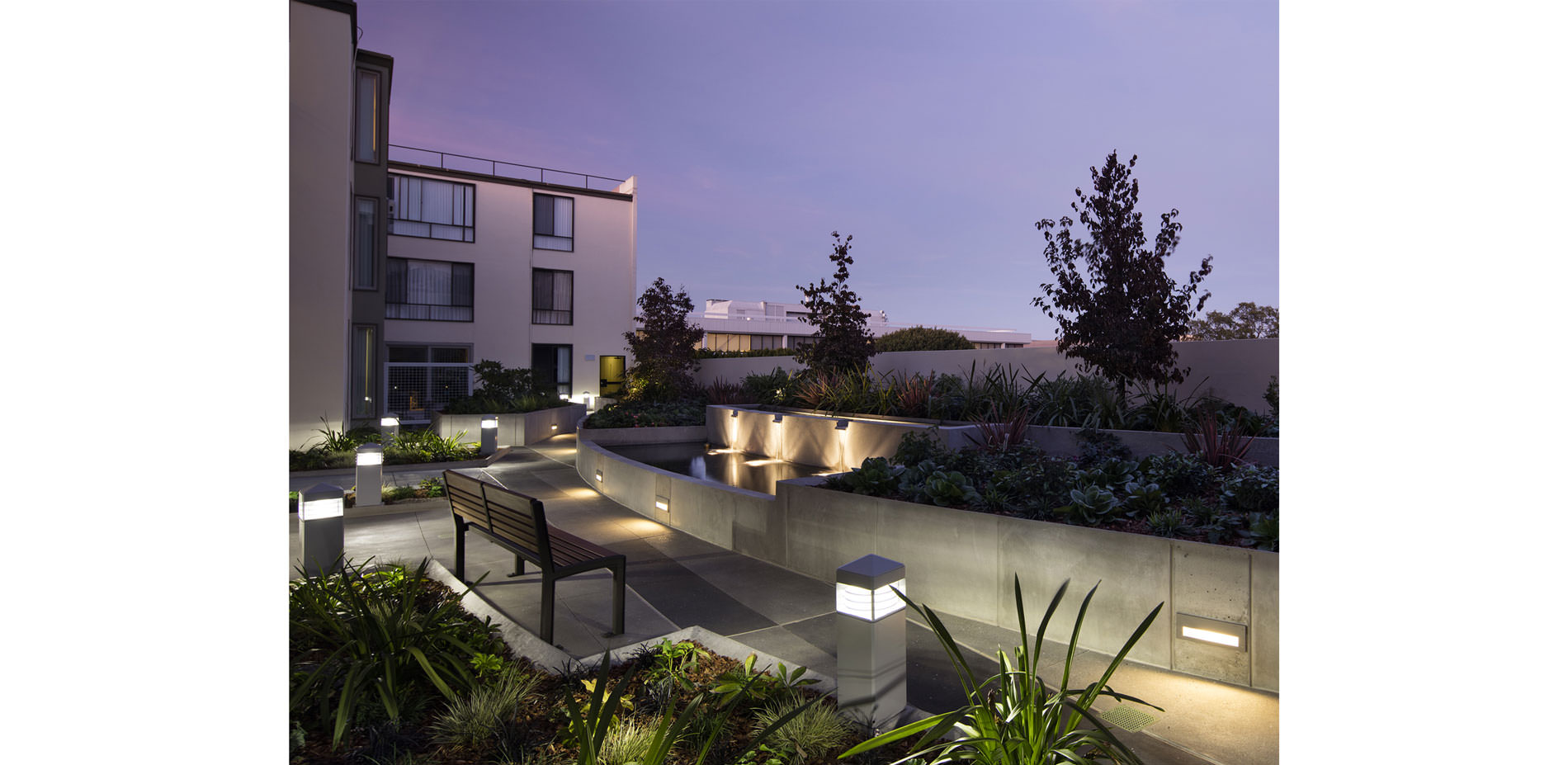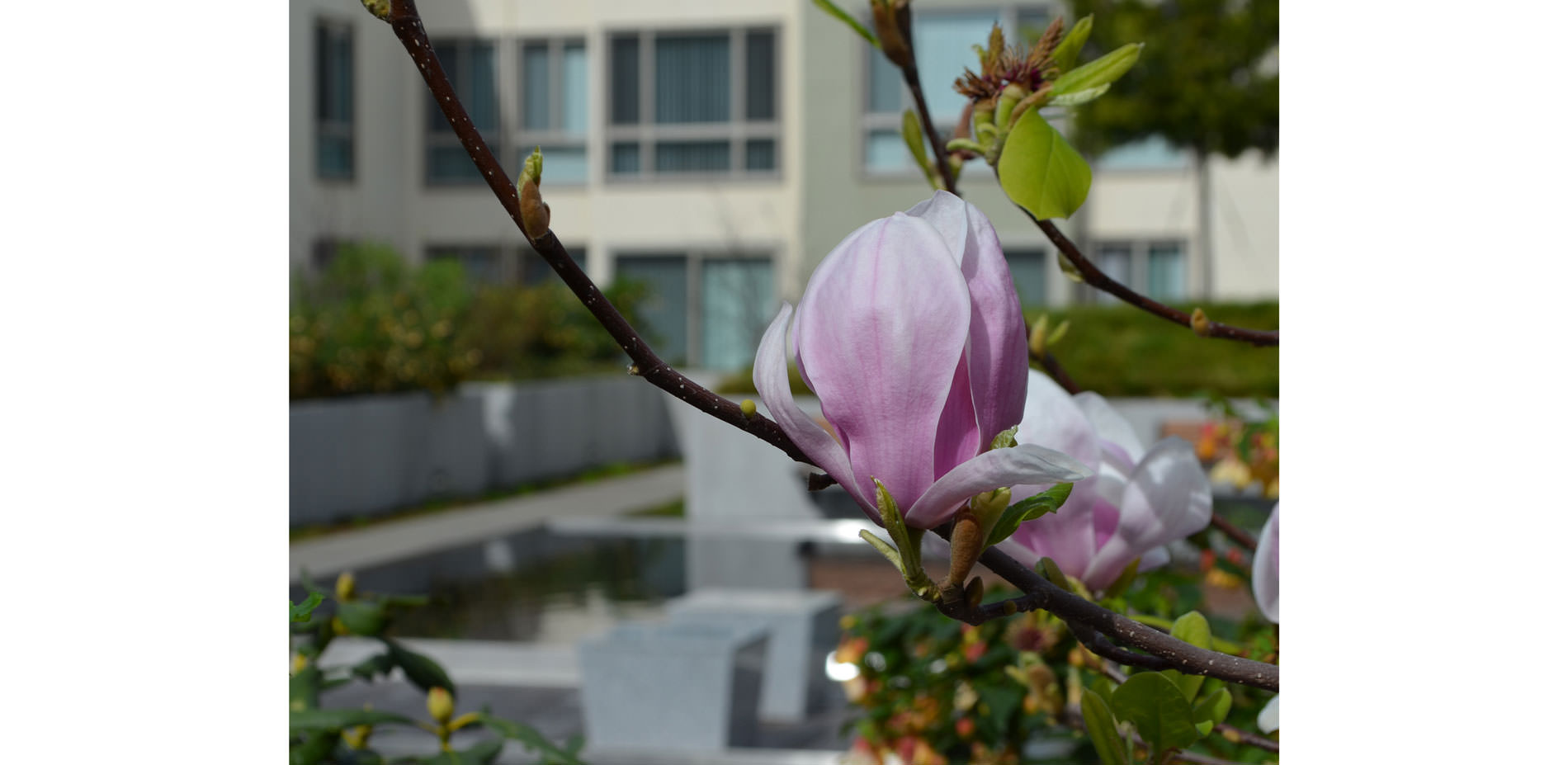Northpoint Apartments
Honor
Residential Design
San Francisco, CA, USA | JETT Landscape Architecture + Design | Client: Northpoint Apartments LLC
The design offers intimate moments for people to experience in a very big space. Makes you feel like you have your own backyard.
- 2017 Awards Jury
PROJECT CREDITS
Lead Designer
- Bruce Jett, ASLA
Project Manager
- Eddie Beckusen, JETT Landscape Architecture + Design
Project Architect
- Ken Lidicker, MBH Architects
Client
- Aline Estournes, Northpoint Apartments
Contractor
- Swinerton Builders
Water Feature Designer
- Bonjardim Water Workshop
PROJECT STATEMENT
The NorthPoint Apartments, built in 1969 in San Francisco’s North Beach neighborhood, featured five courtyards designed by the office of Lawrence Halprin, located over podium parking. Half a century later, as the courtyard landscapes had to be replaced due to waterproofing failure, the design team successfully reinvented the project while meeting two aggressive challenges: honoring Halprin's legacy in a contemporary fashion; and reapportioning common and private spaces to meet changed expectations, within the tight constraints imposed by the original flat-slab construction. The strategy is one of carefully proportioned spaces, animated by finely detailed abstractions of the natural elements of water and stone: an homage to Halprin in the materials he used with such insight. All five courtyards — four fully interior and one at the adjacent property line — share forms and colors that pick up on the language of the surrounding buildings, but are differentiated from one another in their geometry, palette of plant materials, and focal elements.
PROJECT NARRATIVE
Project Purpose
This project comprises the redesign of five courtyards over podium parking, as part of a major renovation of an apartment complex originally constructed in 1969 in San Francisco’s North Beach neighborhood. The original courtyard landscapes, designed by the office of Lawrence Halprin, had to be removed because of the failure of the decades-old waterproofing systems, which threatened the building structure as a whole. All five courtyards—four fully internal, the fifth at an adjacent property line—provide both common space and individual patios for first-floor apartments. Two of the principal courtyards have swimming pools; the other two have significant water features. The design of the new landscapes was severely constrained by the existing flat-slab construction. Nevertheless, by utilizing existing depressions in the slab, building up new areas, and applying both extensive and intensive green roof planting strategies, the scheme increased the breadth and depth of soil areas to create a rich garden setting in keeping with Halprin's original design intent. The choreography of raised elements integrated that goal with the larger goal of defining common and private spaces, while at the same time accommodating necessary state-of-the-art waterproofing and infrastructure systems.
The original courtyard landscapes, designed by the office of Lawrence Halprin, had to be removed because of the failure of the decades-old waterproofing systems, which threatened the building structure as a whole. All five courtyards—four fully internal, the fifth at an adjacent property line—provide both common space and individual patios for first-floor apartments. Two of the principal courtyards have swimming pools; the other two have significant water features. At the client’s request, which corresponded with the designer's philosophy, the new landscapes do not attempt to replicate the original designs by Halprin, but instead are conceived as an homage to him in the elements he combined with such insight: water and stone. As a part of the research undertaken to understand Halprin's original intent, his project manager was invited to review the new scheme, of which he observed, "You have done a splendid job of maintaining the spirit of the original designs while updating them in both feeling and materials." Each of the five courtyards has a distinct character, but they are united by a vocabulary of form, color, and refined detail that picks up on and enriches the language of the buildings designed by Wurster, Bernardi & Emmons. Constrained by the slab from going deeper, both planting and water elements are raised up, providing space for infrastructure and increased soil volume to intercept rainfall and slow runoff. Yet the goal is ultimately spatial: separating more equitably defined private patios from well-proportioned common spaces anchored by focal elements —a sculptural water feature, a massive, sculptural steel planter, a tree.
Modifying landscapes designed by iconic figures in the profession is always a challenge. Materials, technology, programs, codes and client tastes all have changed in the past 40+ years, since the original courtyards were designed by Don Carter of Lawrence Halprin's office. The design team approached the project with sensitivity to the essential components of the original design, and wanted to reference key elements Halprin was known for (water features, stone, metal and plantings, etc.) with a fresh look for the courtyards.
Using the latest construction techniques, a new infrastructure was created, one which increased soil depth and promoted drainage. A custom substrate (soil) blend allowed new plant growth to flourish while a weather-controlled subsurface drip irrigation system conserves water.
The new project is an homage to Halprin's work while incorporating an updated design with the latest technology. While the original flat-slab construction proved to be a challenge to work with, the design team brought the courtyards up to current code and accessbility standards.
PRODUCTS
Product Sources: FURNITURE
Product Sources: DRAINAGE/EROSION
Product Sources: FENCES/GATES/WALLS
- Corten Steel
- McNichols Perforated Metal panel privacy screens
Product Sources: IRRIGATION
Product Sources: LUMBER/DECKING/EDGING
- Bison Wood Tiles and pedestal system
Product Sources: STRUCTURES
- Custom cast in place concrete and wood
Product Sources: GREEN ROOFS/LIVING WALLS
Product Sources: SOILS
- American Soils, custom soil blend
Product Sources: HARDSCAPE
- Cast in place concrete
- Stone pavers
Product Sources: LIGHTING
- By lighting designer
